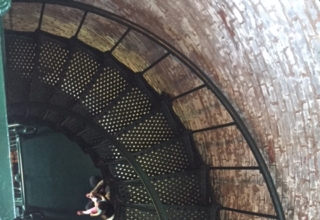
Collateral Organizations
It is important to note that Eisler’s chalice is not just a metaphoric image. She offers ample evidence that the chalice (as well as the sword) are to be found in many nonhierarchical communities that existed in ancient European communities. Graeber and Wengrow (2021) have more recently shown how nonhierarchical systems have also operated over many centuries in societies located throughout the world (including Aboriginal American societies). Furthermore, many of Graeber and Wengrow’s societies set up nonhierarchical systems on a temporary basis—often related to seasons of the year or specific community functions. We propose that Eisler’s chalice can be found in certain contemporary systems—and these systems are often temporary (in alignment with the societies identified by Graeber and Wengrow) These systems are called Collateral Organizations—and they hold the potential of providing the heart-based conditions identified by de Tocqueville.
Purposes: Collateral organizations are used to achieve two primary goals. First, they provide an opportunity for members of an organization to think “outside the box” and lean/learn into the future. Second, collateral organizations help those involved to identify and either resolve or manage challenging issues that have not been addressed in a satisfactory manner via the “regular” way in which the organization operates. A new organization doesn’t have to be created, nor do new people have to be brought into the organization. Only heart-based habits are required when establishing a collateral organization.
The leaders of contemporary organizations often create task forces, project teams, ad hoc committees, quality circles and pilot projects as a way of getting around seemingly intractable problems. They might even transform their organization by imposing a matrix design so that multiple perspective can be brought to a set of recurring problems. These initiatives are often quite valuable in helping to open the doors and windows of the organization so that some freedom can blow in. However, they don’t meet all of the needs that can be served by a collateral design. They simply do not provide enough freedom nor encourage the kind of creative, multi-perspective work that is being engaged in a temporary setting (such as a collateral organization) that is set up with different norms, ways of interpersonal engagement, and even assignment of leadership and facilitation functions.
The collateral organization is unique in that it usually is not populated just with experts who purportedly are best able to address a specific issue; rather, the collateral organization typically involves a whole host of people (often the entire organization). It seems that the intractable issue often is intractable precisely because it is not clear who the experts really are with regard to this specific issue. Unlike most daily challenges that have clearly defined parameters and solutions that are readily accessible to the “right” people with expertise in a specific area, major issues are often multi-tiered and operate in what Miller and Page (2007) call a rugged and dancing landscape. All hands must be on deck when an organization or community faces such a challenge. Who knows where the answer can be found?
Establishing a Collateral Organization: The following steps are typically taken in forming a collateral organization. Leaders of an organization or community must first acknowledge that the usual way of doing things is not necessarily of greatest value when applied to certain types of institutional challenges. It is important to emphasize that this doesn’t mean that the organization or community will abandon its regular way of operating (to be replaced by the new collateral organization): “we will still hold on to our tried-and-true, proven way of being as an organization. But we will be adding something.” We can hold on to the old while embracing the new. This is the magic of collateral designs.
Download Article














